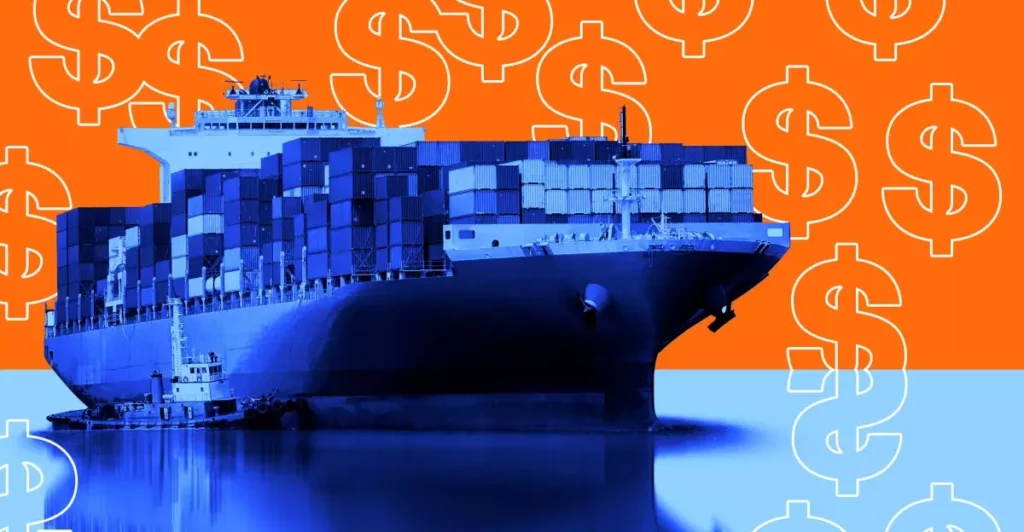The elimination of the de minimis exemption for packages from China and Hong Kong has sent shockwaves through the realm of online shopping. As of May 2nd, U.S. consumers who previously enjoyed tariff-free transactions on goods valued under $800 are now facing an entirely new reality. This policy shift, primarily brought forth under former President Trump’s tariff initiative, is not merely a bureaucratic change but a fundamental disruption to the convenience that Americans have come to expect from their shopping experiences.
The immediate implications are clear: what was once a straightforward online shopping process has become a tangled web of complexities, financial burdens, and unexpected fees. The de minimis exemption was a lifeline for countless small businesses and budget-conscious consumers, providing access to affordable goods that otherwise might not have been feasible. With its abrupt termination, these stakeholders are left grappling with the fallout, raising questions not only about pricing but also about the very accessibility of international products.
Financial Strain and Consumer Choice
The revised tariff structure is daunting. Now, packages shipped through the international postal network face a staggering fee of 90% of their declared value or a flat $75 charge per item. Compare that with freight services like DHL, which encounter a different set of tariffs, including those established by the Trump administration. This convoluted scheme places consumers in an uncomfortable position: either adapt to new financial realities or abandon the ease of international shopping altogether.
For many, the hike in costs will necessitate a reevaluation of purchasing habits. Shoppers accustomed to low-cost imports now have to make agonizing choices: Should they absorb the increased costs or seek alternatives that might not meet their original expectations? The danger lies in the potential erosion of customer loyalty, as shopping becomes a complicated arithmetic exercise rather than a seamless experience.
The Operational Nightmare for Retailers
Retailers, especially newcomers in the e-commerce space, are likely to feel the sting of these changes even more acutely. Companies like Shein and Temu thrived on offering low-cost products with efficient shipping models, but with the de minimis exemption gone, their very business foundations are now under threat. The operational challenges ahead are formidable; they will have to rethink inventory and pricing strategies, leading to potential shortages in lower-margin items that have historically appealed to a wide consumer base.
Moreover, consumers might find their purchasing options dwindling as retailers shift their focus to more profitable products. This contraction of variety might stifle innovation in product offerings and drive customers away. The irony is rich here: an initiative aimed at countering trade imbalances could lead to an unintended monopoly on higher-margin goods, reducing consumer choices to a mere fraction of what was once available.
Impact on Logistics and Enforcement
The implications of this shift extend beyond simple economics. U.S. Customs and Border Protection (CBP) is now tasked with enforcing a suite of rules around how low-value packages are processed. Yet, the feasibility of managing this increased regulatory burden remains questionable. Can they effectively handle the spike in documentation needs without compromising efficiency? The sheer volume of imports likely means that a significant backlog may develop, frustrating consumers further.
While the administration has framed these changes as a crackdown on illicit goods—particularly narcotics like synthetic opioids—the practicalities of enforcement raise red flags. Will these measures genuinely bolster detection efforts, or will they merely exacerbate the challenges already prevalent in policing international shipments?
Consumer Behavior in a Changing Landscape
The transition from convenience to complication is having a profound impact on consumer behavior. Reports of surprise fees on purchases have instilled a sense of anxiety among shoppers who feel blindsided by the abrupt changes. The online shopping experience, once a source of enjoyment and exploration, has transformed into an exercise marked by uncertainty and frustration.
This isn’t just about an adjustment of prices; it’s about a fundamental shift in the way Americans interact with consumer culture. As luxury takes precedence over accessibility, one wonders whether online shopping will soon be a privilege reserved for those who can afford to navigate the labyrinth of tariffs and fees.
Where Do We Go From Here?
As these new tariffs take root, a critical narrative emerges: the balance between protecting domestic producers and ensuring that consumers don’t face extortionate costs. The potential for compromise exists, yet it demands that both consumers and retailers adapt swiftly to an altered landscape. The future of e-commerce hangs in the balance, and how well both sides navigate this transition remains to be seen. The once accessible world of online shopping risks becoming an unsustainable luxury—an alarming development for a nation accustomed to convenience and choice.









Leave a Reply